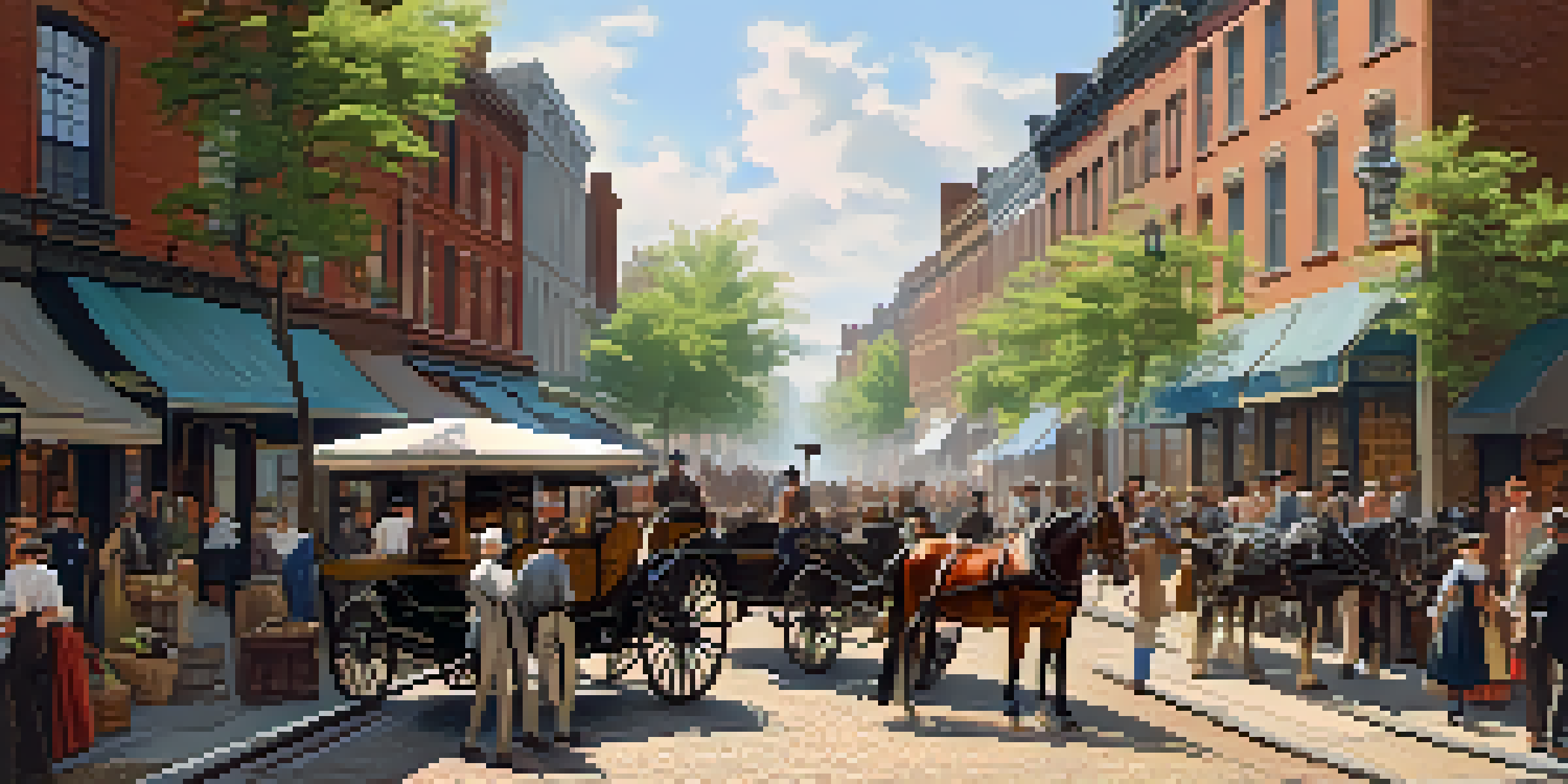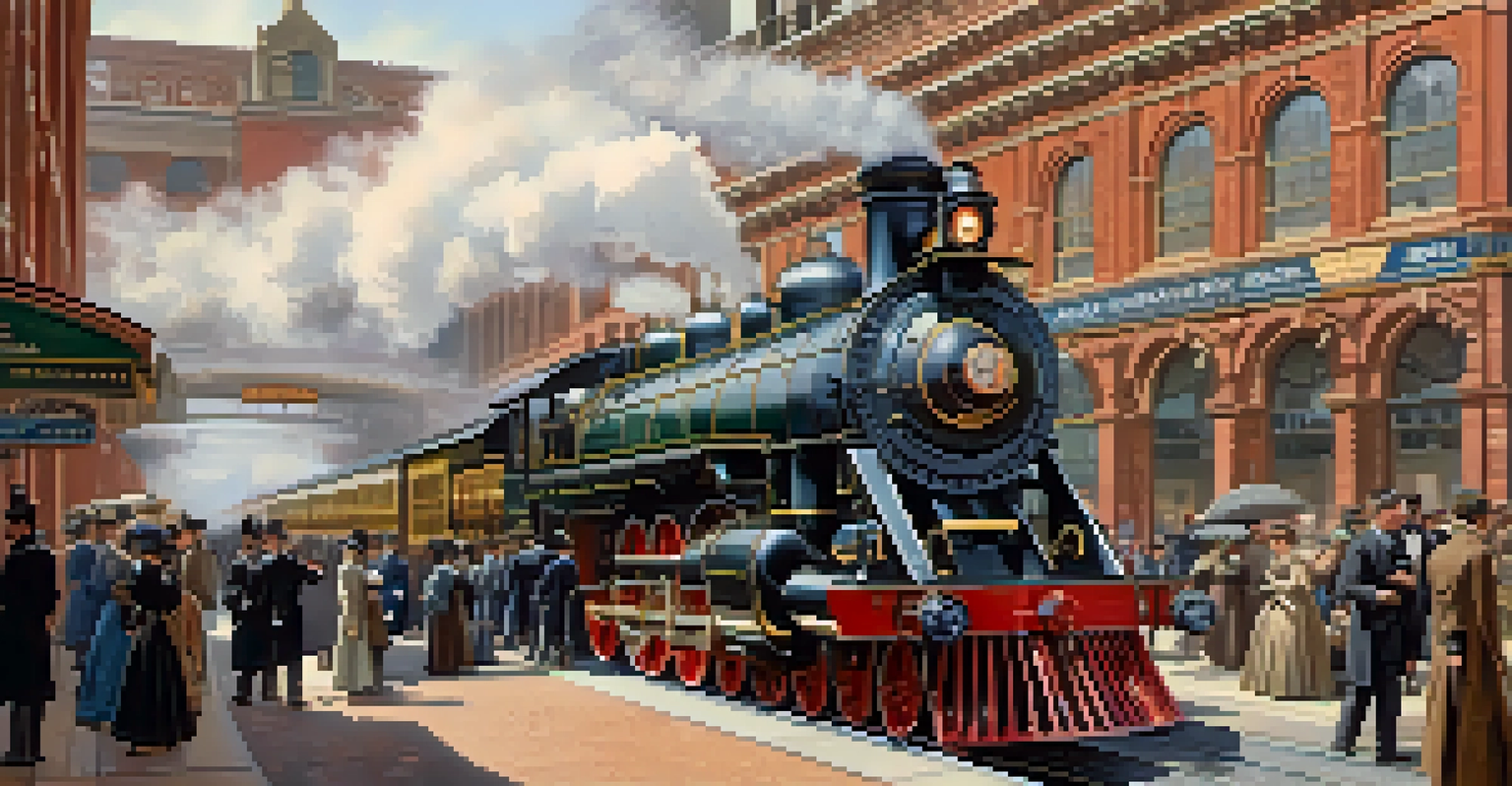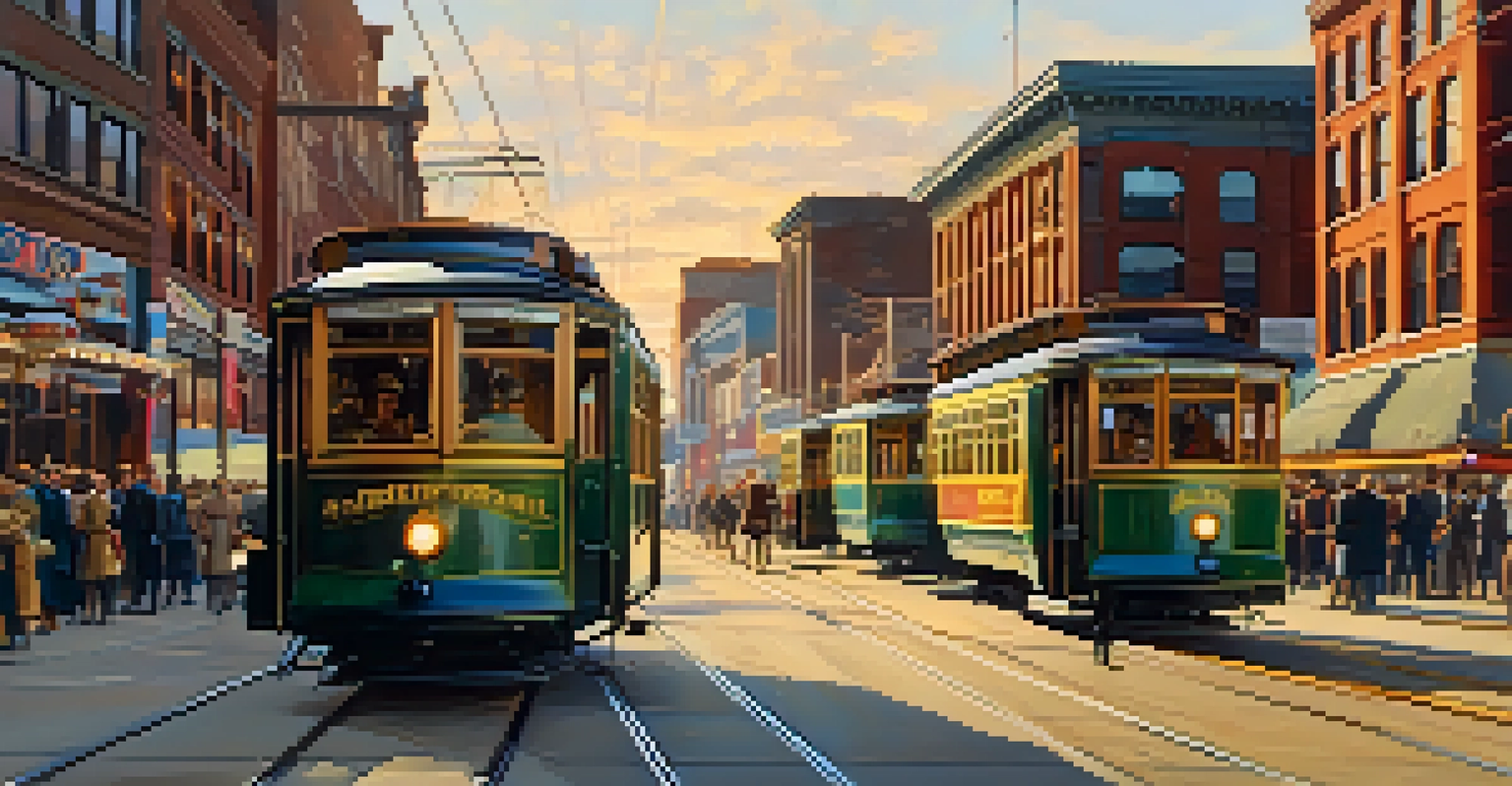The Evolution of Newark’s Transportation Systems

The Early Days: Horse-Drawn Carriages and Ferries
In the early 19th century, Newark's transportation was dominated by horse-drawn carriages and ferries. These methods were essential for connecting residents to nearby cities and facilitating trade. Imagine the sight of bustling streets filled with horses, as merchants delivered goods to local shops.
Transportation is the center of the world. It is the glue of our economy and society.
Ferries played a crucial role in transporting people across the Passaic River, linking Newark to Manhattan and beyond. This waterway was a lifeline for commerce, allowing goods to be shipped and received efficiently. With the rivers serving as highways, Newark began to thrive economically.
As the population grew, the limitations of these transportation methods became apparent. The demand for faster and more reliable transport solutions was on the rise, paving the way for the next phase in Newark's transportation evolution.
The Rise of Railroads in the 19th Century
The advent of railroads in the mid-1800s marked a turning point for Newark's transportation landscape. With the opening of the Newark and New York Railroad in 1834, residents could travel faster and more comfortably than ever before. This innovation transformed Newark into a vital transportation hub.

Trains connected Newark not only to New York City but also to various regions across New Jersey. The convenience of rail travel encouraged people to live in Newark while commuting to jobs in the city. As a result, the population surged, and the city began to expand rapidly.
Evolution of Newark's Transport
Newark's transportation has evolved from horse-drawn carriages to modern innovations, reflecting changing needs and technologies.
However, the proliferation of railroads also brought challenges, such as congestion and safety concerns. As more trains crisscrossed the city, the need for better infrastructure became increasingly urgent, leading to further developments in transportation systems.
The Birth of Streetcars: A New Era of Urban Mobility
By the late 19th century, streetcars emerged as a popular mode of transportation in Newark, offering an efficient way to navigate the growing urban landscape. These electric streetcars allowed residents to travel longer distances without the fatigue of walking. Picture the vibrant streets filled with streetcars, bustling with passengers heading to work or leisure activities.
The future of transportation is not about the cars we drive, but about the cities we create.
Streetcars connected various neighborhoods, making it easier for people to access shopping, entertainment, and public services. This newfound mobility contributed to the city's growth and economic development, as businesses flourished along the routes. The streetcar era represented a paradigm shift in how residents experienced urban life.
However, with the rise of automobiles in the early 20th century, streetcars faced stiff competition. The transition to car-centric infrastructure began, marking the beginning of a new chapter in Newark's transportation story.
Automobiles Take Over: The Mid-20th Century Shift
The mid-20th century saw a significant shift as automobiles became the dominant form of transportation in Newark. With the expansion of highways and the popularity of personal vehicles, the city began to transform its infrastructure to accommodate this change. Imagine the sound of engines roaring as cars filled the roads, replacing the clang of streetcars.
The rise of the automobile brought both convenience and challenges, such as increased traffic congestion and pollution. To cope with the growing number of vehicles, Newark invested in widening roads and developing parking facilities. This shift reshaped the city's landscape, focusing more on car travel than public transit.
Public Transit Revitalization
Late 20th-century efforts focused on revitalizing public transit to address congestion and promote sustainability.
As the automobile culture flourished, public transportation faced a decline. Many streetcar lines were dismantled, leaving residents with fewer options for getting around. This period highlighted the tension between personal mobility and the need for sustainable urban transport solutions.
Revitalization of Public Transit: The Late 20th Century
As concerns over traffic congestion and environmental sustainability grew, Newark began to revitalize its public transit systems in the late 20th century. The city recognized the importance of providing reliable options for residents who relied on public transportation. This period marked a renewed commitment to improving bus services and train connections.
Investments were made to enhance the existing rail infrastructure, including the expansion of the PATH train system, which connects Newark with Manhattan. This revitalization effort aimed to attract commuters back to public transit and reduce the reliance on cars. The resurgence of public transport reflected a shift in priorities towards sustainability.
Additionally, the city introduced initiatives to promote cycling and walking as viable transportation options. This multifaceted approach aimed to create a more balanced transportation ecosystem that catered to the diverse needs of Newark's residents.
Modern Innovations: Technology and Transportation Today
In recent years, technology has played a pivotal role in shaping Newark's transportation systems. The rise of ride-sharing services and mobile apps has transformed how residents navigate the city. Imagine a world where you can summon a ride with just a few taps on your smartphone, making transportation more accessible than ever.
Newark has also embraced smart technology to enhance public transit efficiency. Real-time tracking of buses and trains allows commuters to plan their journeys with greater accuracy. These innovations help to reduce wait times and improve the overall experience for public transportation users.
Future Trends in Transportation
Looking ahead, Newark aims to enhance its transportation systems through sustainability and community engagement.
Moreover, the city is investing in sustainable practices, such as electric buses and improved cycling infrastructure. This commitment to modernizing transportation not only meets the needs of residents but also contributes to a greener, more sustainable future for Newark.
Future Trends: What Lies Ahead for Newark's Transport
Looking ahead, Newark's transportation systems are poised for exciting developments as the city continues to evolve. With an increasing focus on sustainability and public transit efficiency, we can expect further investments in infrastructure and technology. Imagine a future where electric vehicles dominate the roads, and public transit is seamless and efficient.
Urban planning initiatives are likely to prioritize walkability and accessibility, creating a more integrated transportation network. This holistic approach aims to reduce traffic congestion and promote healthier lifestyles for residents. As cities around the world embrace these trends, Newark is well-positioned to follow suit.

Additionally, community engagement will be essential in shaping the future of transportation in Newark. By involving residents in the decision-making process, the city can ensure that its transportation systems meet the diverse needs of its population, fostering a vibrant, connected community.